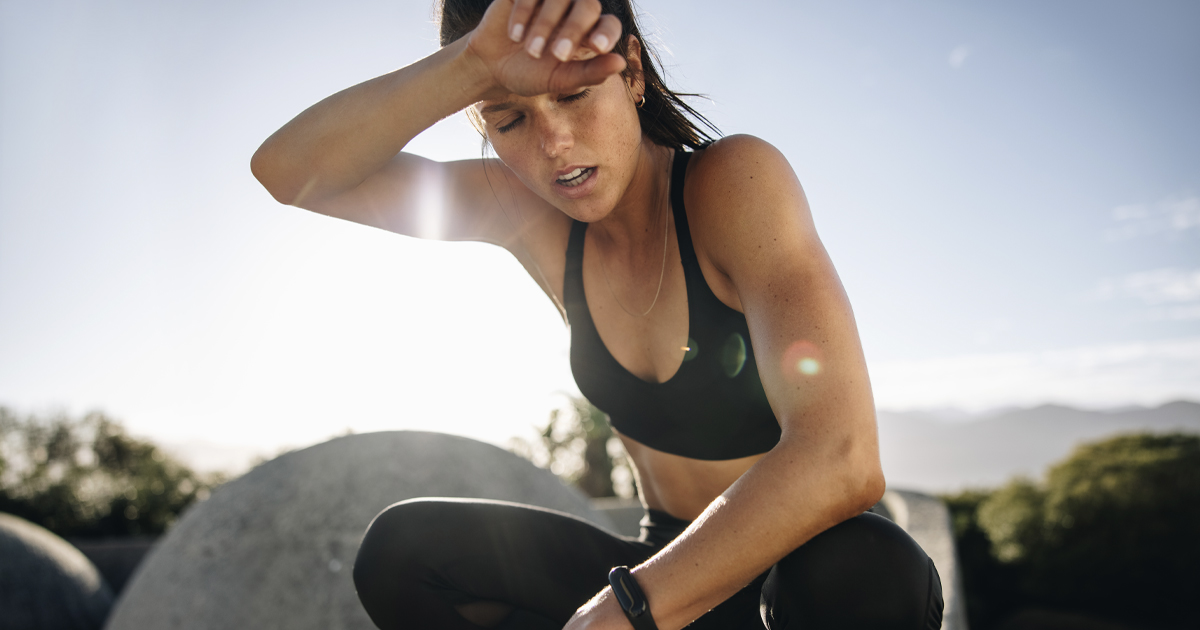
Summer is in full swing and as temperatures rise, your risk of suffering from heat illness rises, too. Contrary to popular belief, heat illness is not just one illness that happens when your body starts to overheat. Rather, there are four different types of heat illnesses that range from mild to severe–heat cramps, heat rash, heat exhaustion, and heat stroke.
The more you know about these four types of heat illness, the better you can protect yourself and your family in the hot, humid summer months. For more on this hot topic, read on to learn about symptoms, how to handle different types of heat illnesses, and tips for heat illness prevention.
These painful muscle spasms are the mildest of the heat illness types, but they still demand attention. Heat cramps typically happen when you’ve been physically active in the heat. Those most at risk to experience heat cramps include seniors, small children, overweight individuals, and people who’ve been drinking alcohol.
It’s easy to see and feel the symptoms of heat cramps, which usually include:
As one of the more minor heat illness types, there’s no need to go to great pains to ease your aches. Simply move to a cool place to rest, cool down with cold clothes or sports drinks, and gently stretch cramped muscles. Symptoms should subside in a few hours.
A heat rash can spread like wildfire and you’ll quickly feel the itchy, bumpy burn. Heat rash is typically sparked by hot, humid weather, and excessive physical activity that makes you sweat so much that your sweat gets trapped in your skin.
A heat rash usually develops in skin folds and where clothing rubs against the skin. Symptoms of heat rash include:
Heat rash symptoms usually heal on their own in a few days by cooling down your skin with cold compresses, taking cool baths, and staying out of the heat. If heat rash symptoms linger longer or worsen, visit your local vybe urgent care. When it comes to this kind of heat illness, prevention is your best protection. Wear lightweight clothing and limit physical activity when it’s hot outside.
After too much hot weather, it’s normal to be sick and tired of the heat. But, what isn’t normal is when too much heat makes you sick and tired! This is the case with heat exhaustion. Heat exhaustion is characterized by the inability to continue exercising/working and the presence of a fever between 101 and 104. As one of the more serious heat illness types, heat exhaustion is your body’s response to extreme heat and humidity—resulting in fever and loss of water and salt, from heavy sweating.
If you experience any of these symptoms, you need to treat heat exhaustion right away:
Unfortunately, at-home treatment is very limited. If you’re unsure whether you have heat exhaustion, try drinking cold fluids and resting in a cool location. If your symptoms don’t subside in 15 minutes, go to the emergency room or your local vybe urgent care. Remember to treat heat exhaustion quickly!
Heat stroke is usually brought on by strenuous physical activity during hot, humid weather. This overexertion in the heat causes your body temperature to rise so rapidly that your body can no longer control it. As a result, you can’t cool down and your temperature rises to 105 degrees or higher in mere minutes. Heat stroke is the most serious type of heat illness and in addition to fever, is associated with neurologic abnormality. If you suspect a heat stroke happening, it’s critical to seek care immediately.
While there are several heat stroke symptoms, the following are the most common warnings to watch for:
At the first sign of heat stroke symptoms, call 911 or go to the emergency room. While waiting for care, cool down with cold water or ice packs in a shaded area to ease your heat stroke symptoms. To lessen your risk of heat stroke, stay inside during hot weather. If you need to be outdoors in the heat, the best advice for heat illness prevention is to drink plenty of fluids and avoid grueling activities.
As summer heats up, don’t let the heat beat you down. vybe is here to help with all kinds of heat-related illnesses and injuries. If the heat affects your health, don’t sweat it. Just walk-in or make an appointment online. With vybe urgent care as your partner for summer safety, you and your family can safely soak up every minute of summer fun.
FIND YOUR VYBE